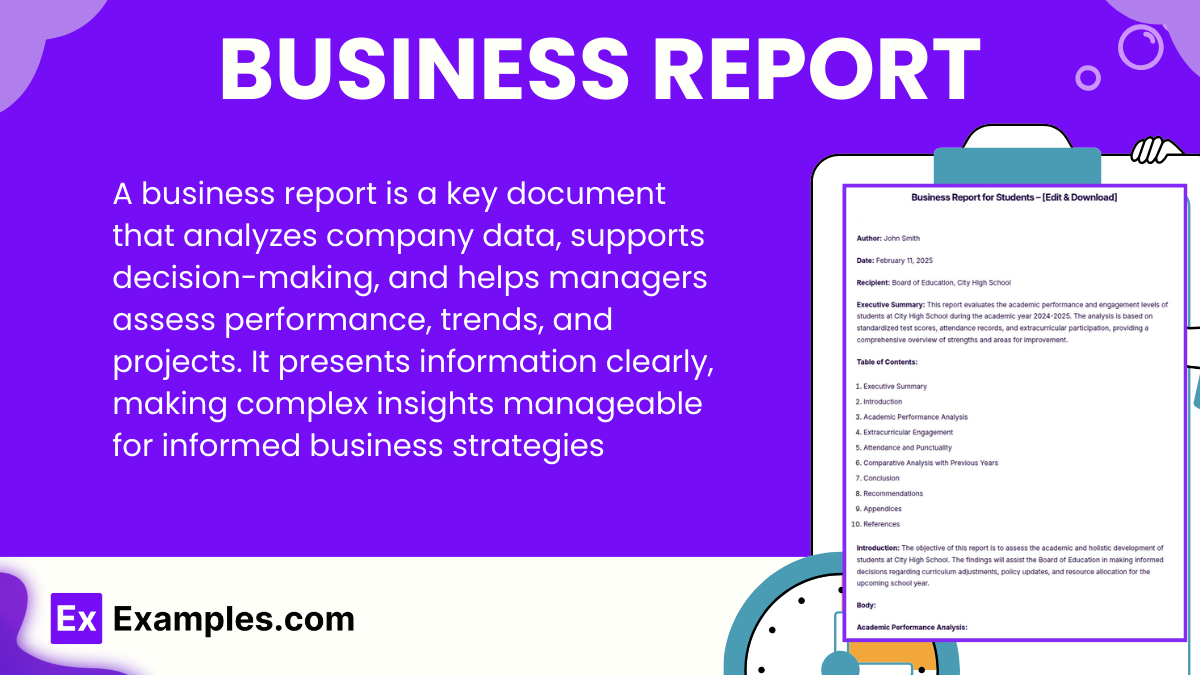20+ Business Report Examples to Download
A business report is a crucial document that provides detailed analysis and valuable insights into specific areas of a company. Designed to support decision-making processes, it systematically breaks down complex information into manageable sections, presenting data in a clear and concise manner. Whether you’re evaluating performance, planning future projects, or assessing market trends, a well-crafted business report serves as an essential tool for managers and stakeholders to understand current operations and make informed decisions.
What is Business Report?
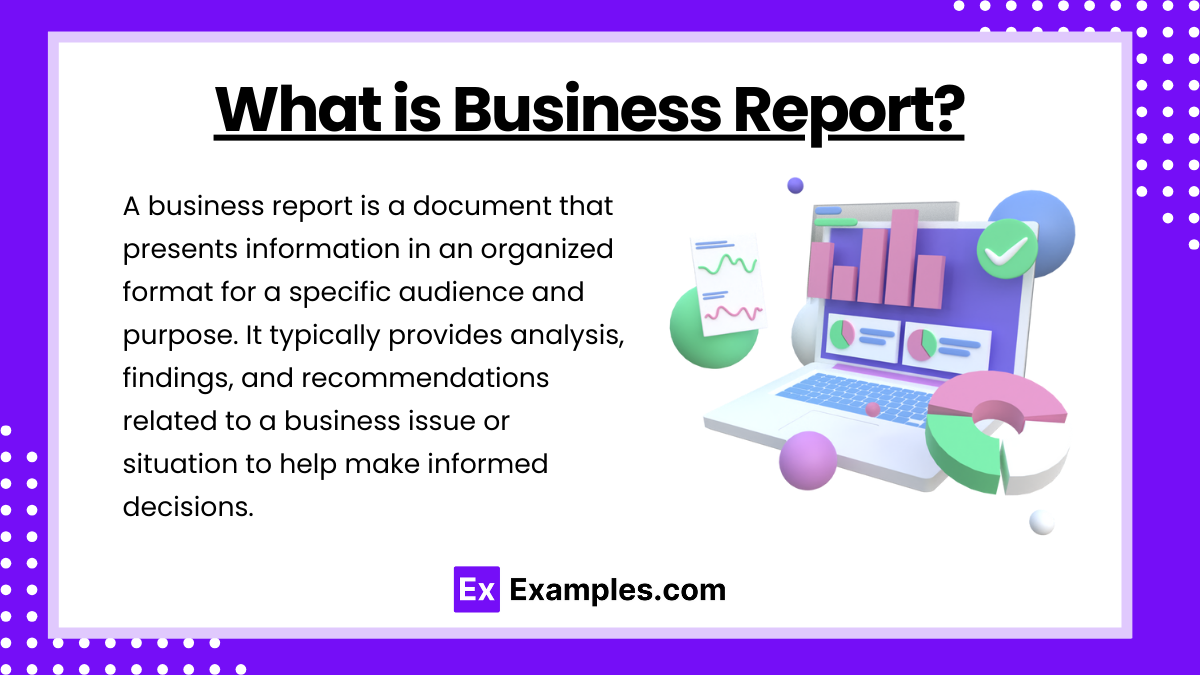
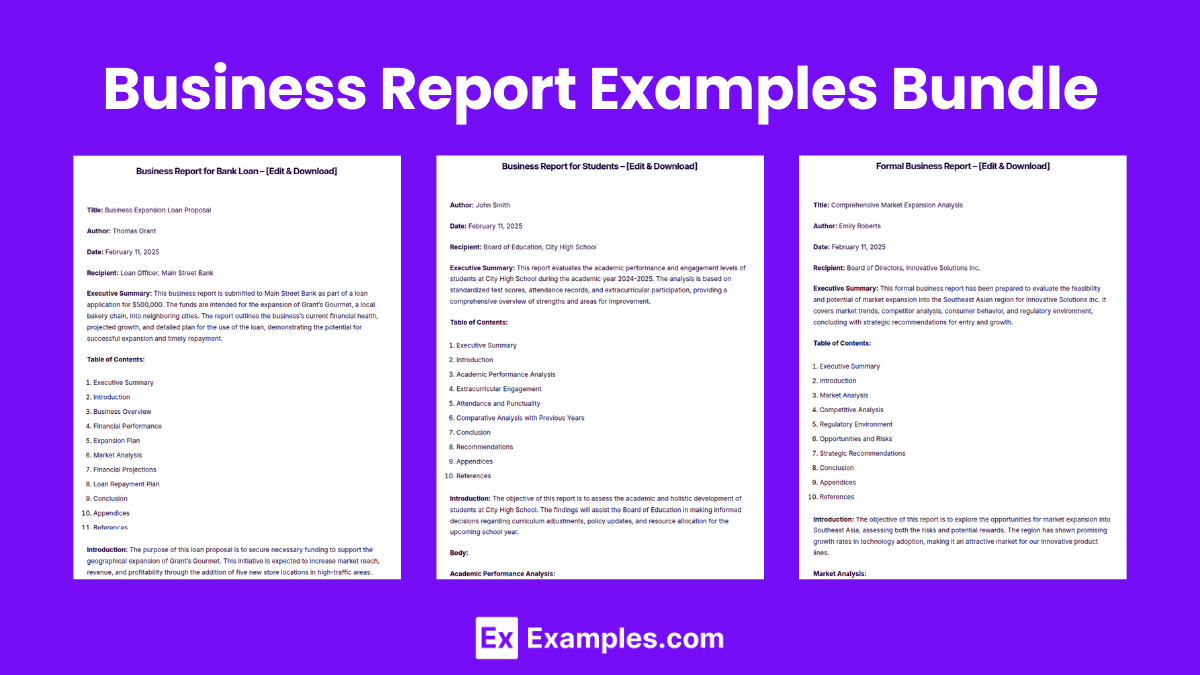
Business Report Examples Bundle
Business Report Format
Title Page
Includes the report’s title, author’s name, submission date, and the recipient’s name or organization.
Executive Summary
A brief overview of the main points, conclusions, and recommendations of the report, allowing readers to quickly grasp the essence of the document.
Table of Contents
Lists the headings and subheadings with their corresponding page numbers to navigate the report easily.
Introduction
Introduces the topic, purpose, and objectives of the report, and provides background information to set the context.
Body
Divided into sections and subsections, each heading should address a specific aspect of the report’s topic, presenting research, results, and analysis.
Conclusion
Summarizes the findings, reinforcing the report’s main points and the implications of the results.
Recommendations
Suggests actionable steps based on the report’s findings.
Appendices
Includes additional materials that are relevant to the report but not integral to its main text, like charts, graphs, or detailed data.
References
Lists the sources of information used in the report to give proper credit and allow readers to verify the content.
Business Report Example
Title: Annual Marketing Analysis Report
Author: Jane Doe
Date: February 11, 2025
Recipient: XYZ Corporation Board of Directors
This report provides a comprehensive analysis of the annual marketing efforts for XYZ Corporation for the year 2024. It highlights key strategies, campaign results, budget allocation, and ROI, concluding with strategic recommendations for improving marketing efforts in 2025.
Executive Summary
Introduction
Market Analysis
Campaign Performance
Budget Review
Conclusion
Recommendations
Appendices
References
The purpose of this report is to evaluate the effectiveness of marketing strategies employed by XYZ Corporation in 2024, identify strengths and weaknesses, and propose improvements for the upcoming year.
Market Analysis:
Overview of the industry trends.
Competitive landscape and positioning.
Campaign Performance:
Summary of marketing campaigns launched.
Analysis of campaign reach, engagement, and customer response.
Performance metrics and KPIs.
Budget Review:
Detailed breakdown of the marketing budget for 2024.
Comparison of budget allocation vs. spending.
Analysis of cost-effectiveness and ROI.
The marketing strategies implemented in 2024 led to a 15% increase in customer engagement, although the ROI on digital ads was below the industry average.
Increase the budget for social media advertising to capitalize on high engagement rates.
Reallocate funds from underperforming digital ads to more lucrative channels.
Introduce a quarterly review of campaign performance to adjust strategies as needed.
Appendix A: Detailed Campaign Results
Appendix B: Budget Breakdown
Market Analysis Reports
Internal Company Data from 2024
Industry Advertising Standards
Business Report Examples
Business Report for Students
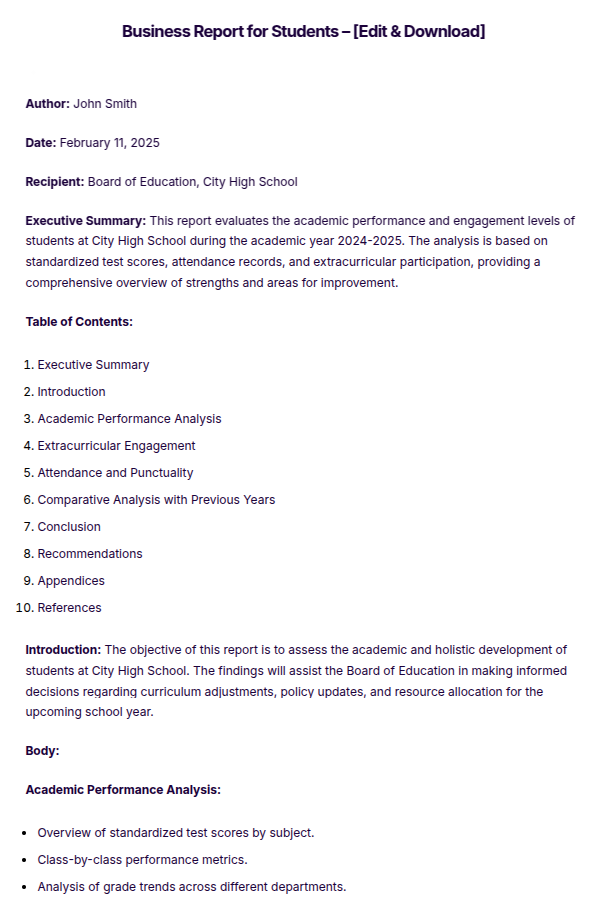
Formal Business Report

Business Report for Bank Loan
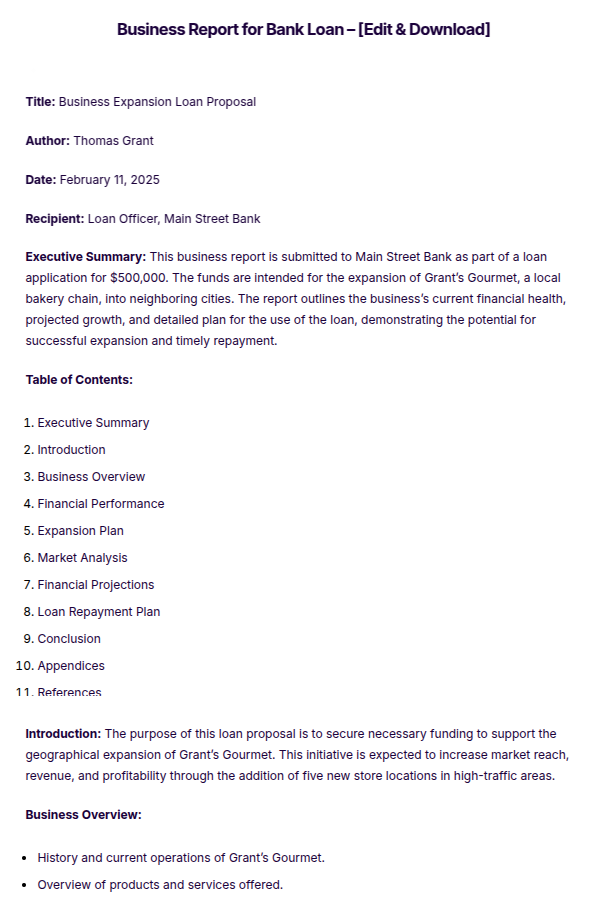
More Examples on Business Report
- Business Report Small Business
- Business Report for Investors
- Business Report for a Project
- Business Report for Apple
- Simple Business Report
- Informal Business Report
- Assignment Business Report
- Annual Business Report
- HSC Business Report
- Nightly Business Report
Commercial Business Report Template
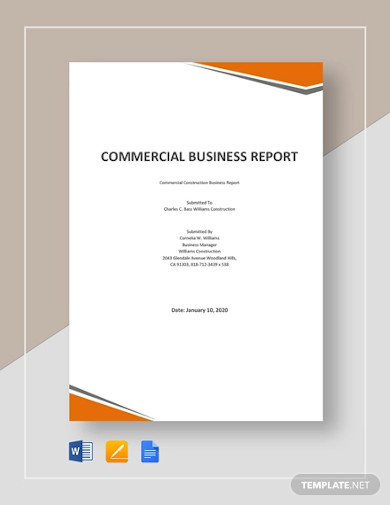
Business Report Template
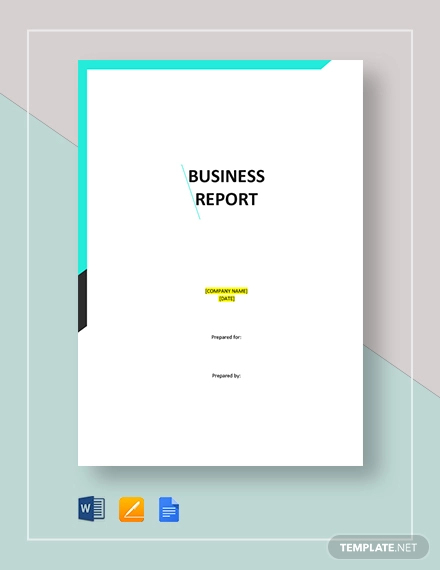
Business Progress Report Template
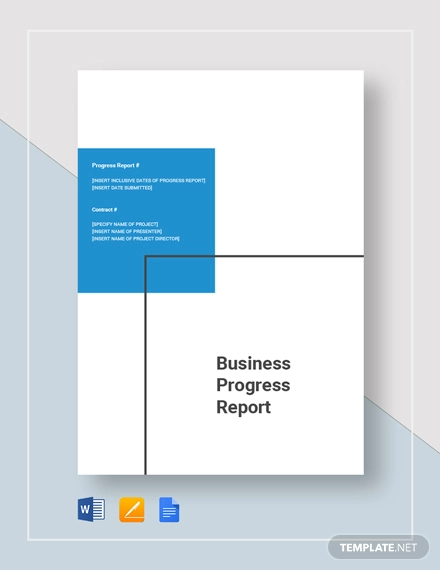
Quarterly Business Report Template
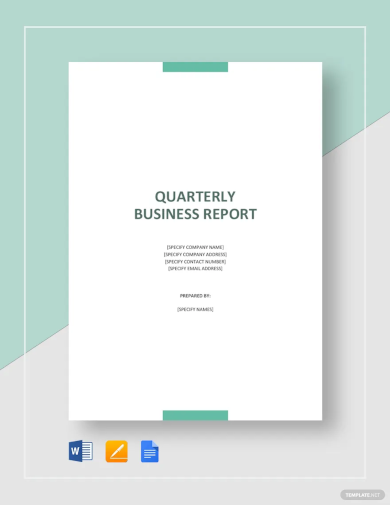
Weekly Business Report Template
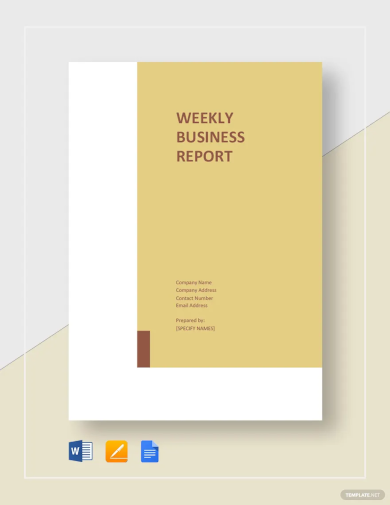
Business Progress Report Example
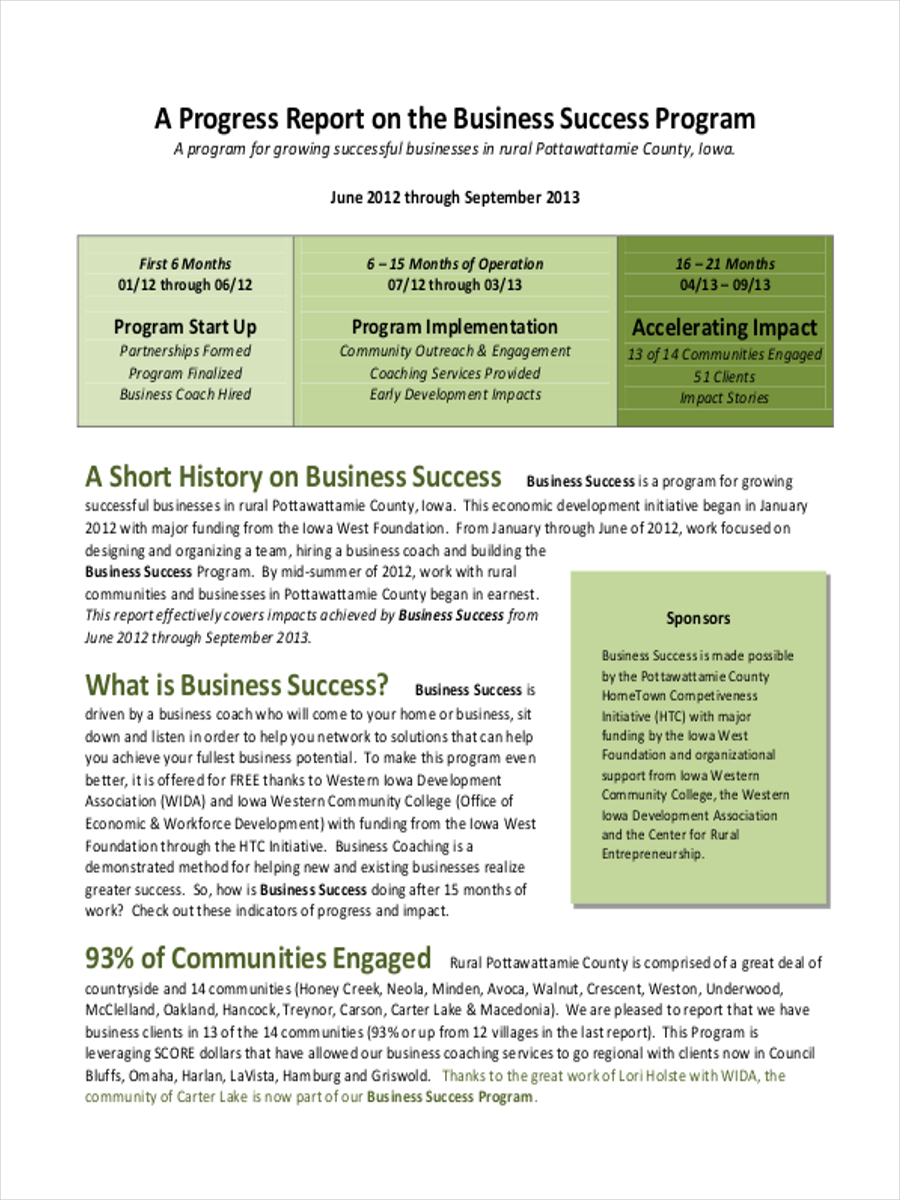
Monthly Business Report Example

Business Report Writing Example
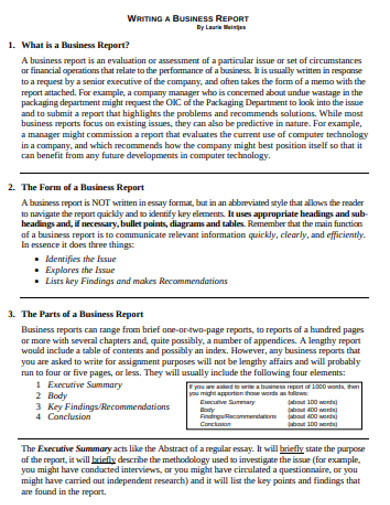
Business Report Example in PDF
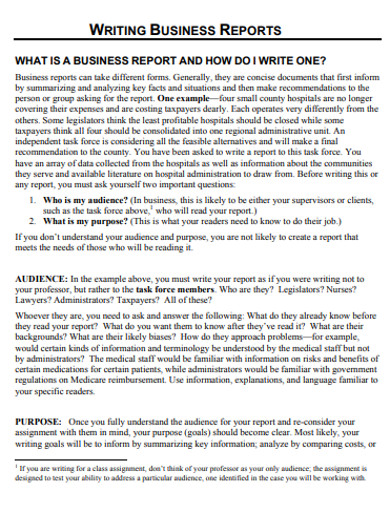
Types of Business Reports
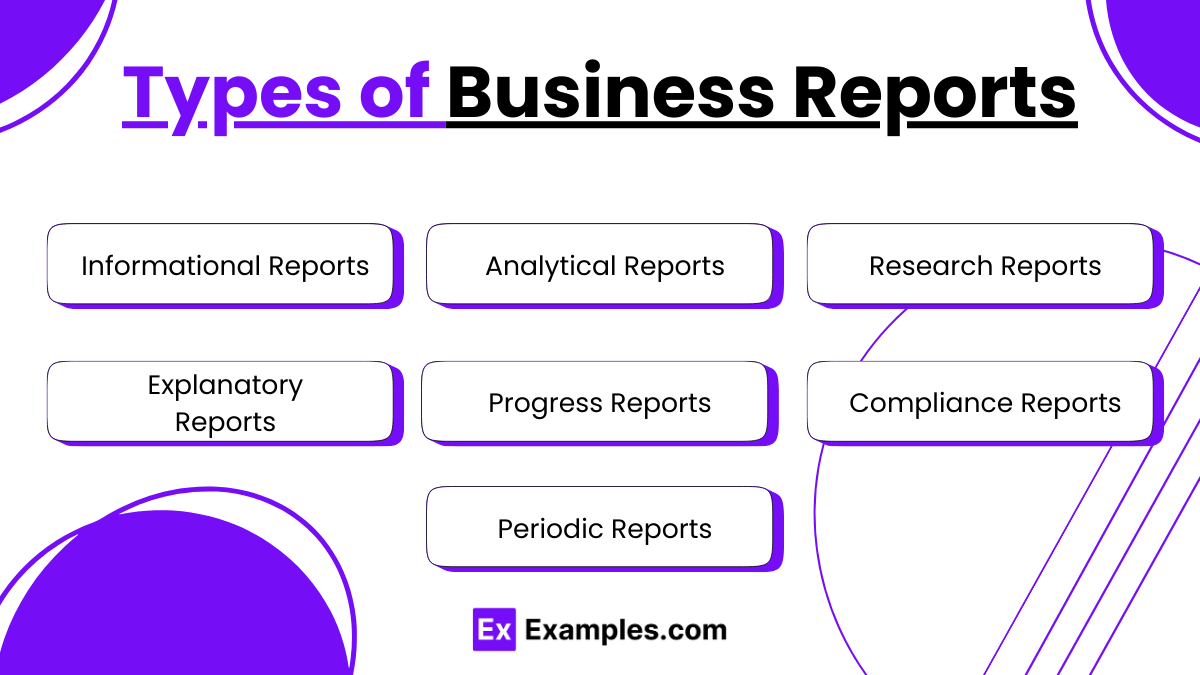
1. Informational Reports
These informational reports present data and facts without analysis or recommendations. They are used to keep stakeholders informed about business activities, such as monthly financial reports or employee productivity reports.
2. Analytical Reports
Analytical reports evaluate information or data to solve problems, answer questions, or make decisions. Examples include performance evaluations, feasibility studies, and market analysis reports.
3. Research Reports
These involve a deep study of a specific topic, such as consumer research or industry trends. Research reports are comprehensive and are based on substantial evidence and methodologies.
4. Explanatory Reports
Explanatory or interpretive reports clarify complex situations or data, often explaining the reasons behind certain business results or the outcomes of particular activities, such as a drop in sales in a quarterly business review.
5. Progress Reports
Progress reports monitor and control the development of an ongoing project. They inform the stakeholders about the status, developments, and whether projects meet the planned schedules and goals.
6. Compliance Reports
These are required by organizations to show conformity with laws, regulations, and policies. Compliance reports are common in industries like finance, healthcare, and manufacturing.
7. Periodic Reports
Periodic reports are issued on a regular, scheduled basis, such as weekly, monthly, or annually. They provide continuous insight into certain aspects of the business, like financial or operational status.
How to Write a Business Report
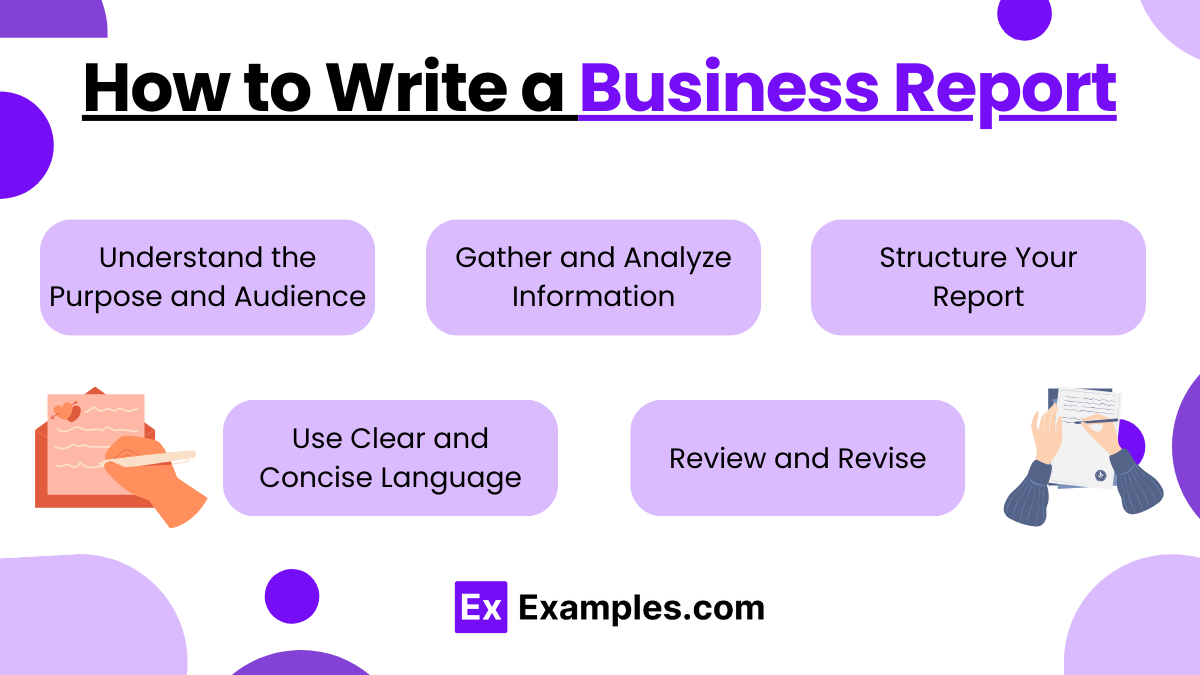
Understand the Purpose and Audience
Before you begin writing, clarify the purpose of the report and identify who will be reading it. This will guide the tone, content, and complexity of the report.
Gather and Analyze Information
Collect all necessary data from reliable sources. Analyze this information to understand trends, patterns, and issues that need addressing in the report.
Structure Your Report
Organize the report in a logical structure: start with an executive summary, followed by an introduction, the main body (divided into sections as needed), and a conclusion with recommendations.
Use Clear and Concise Language
Write in a straightforward and professional tone. Avoid jargon unless it is industry-specific and known to the audience. Keep sentences and paragraphs concise to maintain clarity.
Review and Revise
After completing the first draft, review the report for any errors or unclear sections. Ensure all data is presented accurately and the conclusions and recommendations logically follow from the information provided.
How to Create a Powerful Business Report
- Define Objectives Clearly: Start by clearly defining the goals of the report. Knowing what you aim to achieve with the report can drive a more focused and effective analysis.
- Collect Comprehensive Data: Ensure that the data you collect is comprehensive and relevant. Use both qualitative and quantitative data to support your analysis and recommendations.
- Organize for Impact: Structure your report to make it easy to read and persuasive. An impactful report often follows a clear narrative, leading the reader through the findings to the recommendations.
- Write with Precision: Utilize precise language that conveys your findings and suggestions directly and succinctly. Effective communication is key to making your report powerful.
- Edit for Quality: Rigorously edit your report to uphold high-quality standards. Check for grammatical errors, data accuracy, and coherence in your arguments to ensure the report is professional and credible.
Tips on for a Good Business Report
- Start with a Clear Objective: Clearly define what you want to achieve with your report. Understanding the purpose will guide the scope and depth of your research and analysis.
- Organize Information Logically: Structure your report in a way that flows logically from one section to the next. Start with an executive summary, followed by an introduction, the main body of the report, and a conclusive section with recommendations.
- Use Visual Aids: Incorporate charts, graphs, and tables to illustrate key points and data. Visual aids help break up text, making the report easier to read and understand.
- Be Concise and Clear: Use clear and concise language throughout the report. Avoid unnecessary jargon and verbosity. Make your points straightforwardly to ensure they are understood by all intended readers.
- Cite Sources Accurately: Ensure all data and information from external sources are accurately cited. Proper citations add credibility to your report and help avoid issues of plagiarism.
- Review and Revise: Always review your report multiple times before finalizing it. Look for errors in grammar, punctuation, and style. Revise any sections that may be unclear or ambiguous to ensure your report is as effective as possible.
FAQs
Why are business reports important?
Business reports provide crucial information for decision-making and help track and manage various business activities effectively.
What should be included in a business report?
A business report typically includes an executive summary, introduction, methodology, findings, conclusions, and recommendations.
How long should a business report be?
The length of a business report can vary greatly depending on the complexity of the topic and the requirements of the stakeholders.
Who is the audience for a business report?
The audience can vary but often includes company executives, managers, stakeholders, or specific departments within a company.
What is the difference between a business report and a business plan?
A business report analyzes past or current data and issues, while a business plan focuses on future strategies and goals for success.


